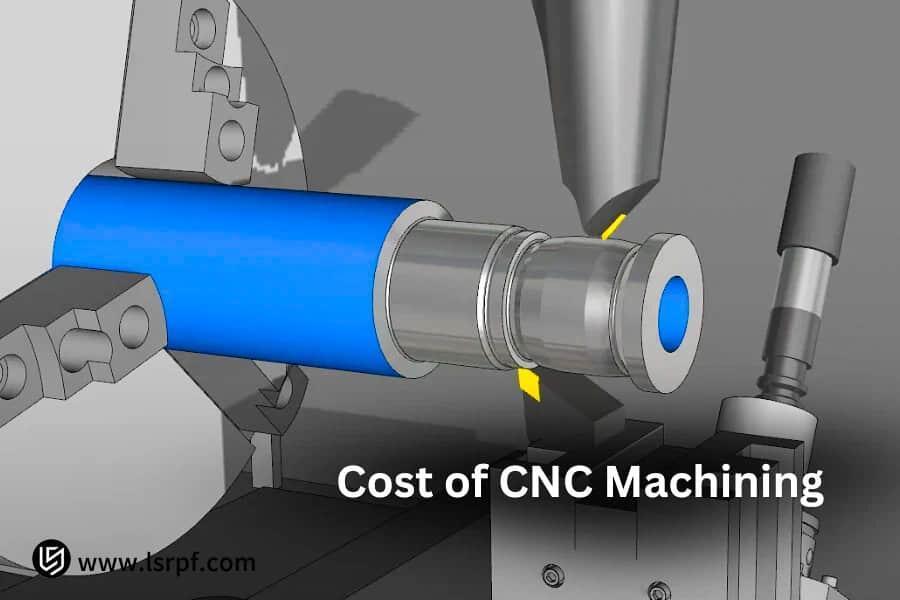In the production industry, in producing new products or production in bulk, maintaining tight control of costs is essential to the success of a project. The majority of engineers, procurement managers, and business people generally face two main issues in their projects: how to effectively manage budgets and avoid cost escalation; and how to make the proper choice between different suppliers, balancing quality with price.
By this point, the key question is: What is the actual hourly cost of CNC machining? That is not a simple number; it is influenced by different variables, including equipment type, material, labor hours, and geography. Without professional advice, estimates on one's own can result in quick misbalances.
As your precision manufacturing partner, LS Manufacturing understands your needs. We'd like to provide you with insight into the significant components of CNC costs through their breakdown. If you're ready to receive a CNC machining quote, we're here to provide you with accurate, transparent, and trusted fast quotes. To save you time, here’s a quick overview of the core conclusions.
CNC Machining Cost Core Quick Reference
| Cost Categories | Specific Components/Influencing Factors |
| Machine Cost | Hourly operating rate of the CNC machine (depreciation, maintenance, power utilized, etc.). |
| Material Cost | Cost of purchase of the raw material used to make the part. |
| Labor Costs | Costs of programmer and operator labor. |
| Part Complexity | The more complicated the design, the higher the programming time and machining time, and the costlier. |
| Order Batch Size | Batch size affects the setup cost per unit at the start. |
| Precision Requirements | Larger tolerances increase the cost of machining. |
| Post-processing Functions | Such as sandblasting and anodizing, incur additional cost for surface coatings. |
The key to grasping the cost of CNC machining is the knowledge that it is made up of three building blocks: machine, material, and labor, and is governed by three variables, design complexity, order batch size, and process quality. We hope this table will help you easily construct a cost estimation framework.
For a professional CNC machining quote tailored to your project, LS Manufacturing is at your service.
Why Trust This Guide? Practical Experience From LS Manufacturing Experts
The advice found in this guide comes from LS Manufacturing's over 20 years of real-world experience working with precision CNC machining. We're not armchair strategists; we're hands-on business partners who've helped hundreds of customers overcome tough manufacturing hurdles.
The heritage of LS Manufacturing is rooted on the shop floor. From coping with the challenging machining nature of titanium alloys to achieving ultra-high micron-level tolerances on medical components, we've accumulated a rich cache of solutions to a complete list of material and precision issue. This means the hourly CNC machining rates we calculate for you are based on much-overlooked factors like tool wear, processability, and efficiency optimization.
When we provide you with a CNC machining quote according to this guide, you're not only receiving a price; it's the result of LS Manufacturing's four decades of hands-on experience, helping you steer clear of potentially expensive errors and make better decisions.
What Is The Hourly Cost Of CNC Machining?
Of all the initial metrics that business owners and engineers need to understand in designing a manufacturing project, one of the most crucial is the CNC machining hourly cost. It forms the basis for good budgeting and cost control. The hourly CNC machining rate typically captures the total cost of operating a CNC machine tool for an hour and can vary widely, typically $50 to $200 USD. Some of the prevalent influencing factors are:
- Equipment and Specifications: Average three-axis machine tool and high-end five-axis multi-process machining center operating costs would differ significantly. The precision, power, and age of the machine tool directly determine its rate base.
- Material and complexity: Hardened aerospace alloys to the usual engineering plastics differ on the basis of machining largely on tool wear and machine time, determining the CNC machine operating cost overall.
- Order size: Spreading the initial programming and set-up time over small batch sizes amortizes this time, which results in a higher effective hourly rate.
It's critical to know this cost structure so that you can budget. LS Manufacturing believes in transparent pricing. We set the cost structure out clearly in our quotes so that all the costs are well explained, effectively avoiding any hidden costs and keeping your project within budget.
The hourly cost of CNC machining is a factor that fluctuates with time, based on a number of determinants including equipment, materials, and order conditions. Having a partner that provides open-book pricing like LS Manufacturing, you can make it a definite term that will be a powerful tool for sound decision-making.
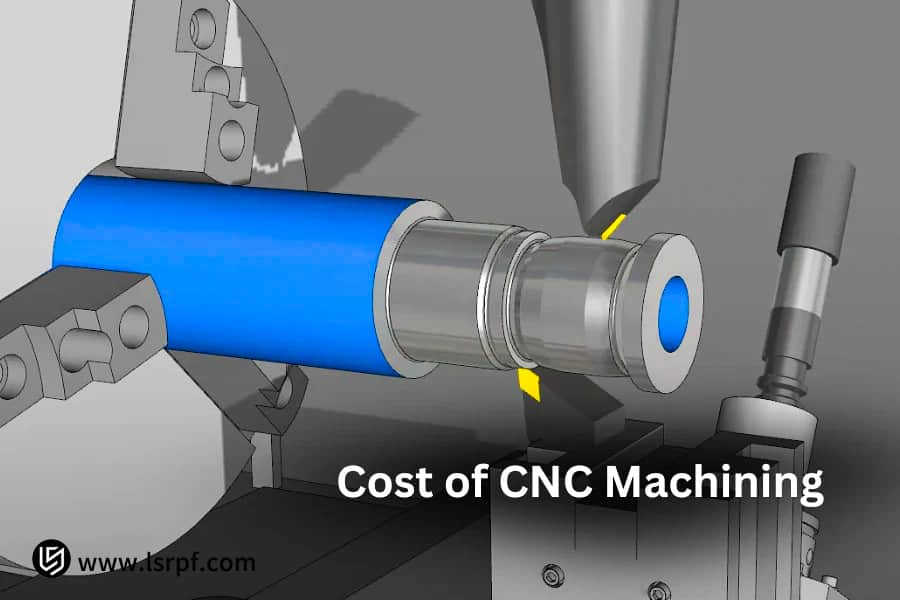
Figure 1: Cost of CNC machining by LS Manufacturing
What Factors Influence CNC Machining Costs?
To actually understand the components of the last price, it's crucial to analyze the root causes that directly lead to cost variation. These factors, which are interconnected, influence the cost of CNC machining, hence affecting the cost of operating a CNC machine tool and ultimately the price of your product. Some of the most critical factors to consider are:
- Material Type: Machining aluminum is relatively cheap compared to hard metals like stainless or titanium. Hard materials increase tool wear and time to machine, which drives hourly rates straight up.
- Part Complexity: The programming complexity, machining time, and setups required to machine a simple geometric block are much different compared to machining a structural component with complex curves, deep cavities, and tiny features. It is one of the most critical drivers of machining time.
- Machine Tool Type and Precision: The cost economics of using a conventional three-axis machine tool are dissimilar from that of using a five-axis simultaneous machine tool. The former can accomplish more advanced machining operations in a single pass, conserving setups but with a greater hourly operating rate.
- Order Lot Size: Lot size directly affects unit cost. Small runs must cover high initial programming and setup expenses, whereas larger runs distribute the fixed expenses and decrease the effective cost per unit.
Determining what factors contribute to the cost of CNC machining is the first thing to know in making an accurate estimate of your project budget. We suggest making these variables part of the design process.
LS Manufacturing's expert technicians are happy to assist you to decompose your requirements and simplify processes for optimum cost-effectiveness with quality assurance.
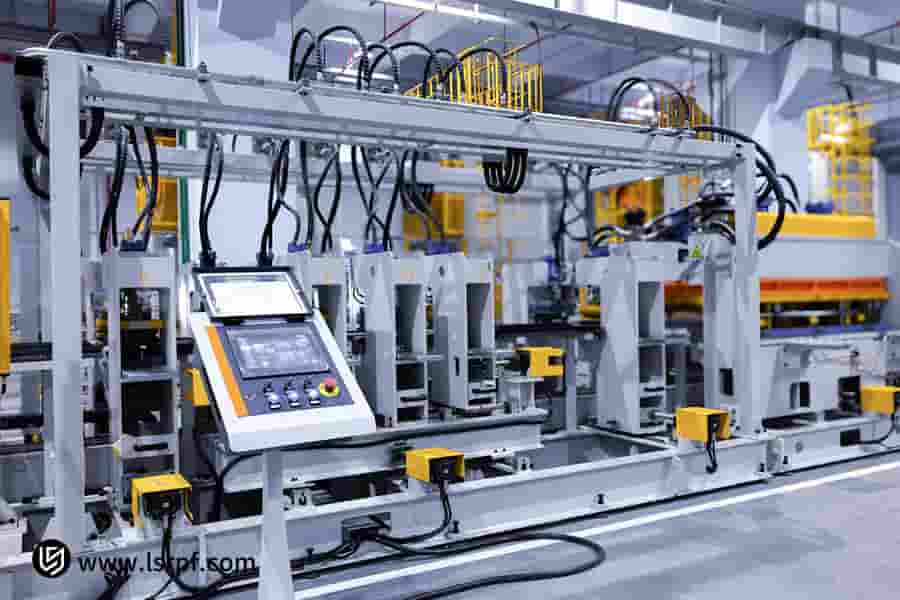
Figure 2: CNC processing workshop by LS Manufacturing
How To Calculate CNC Machining Costs?
Learning "how to calculate CNC machining costs" is the key to successful project management and cost control. Although the process does have a number of variables, its underlying logic is straightforward and encompasses the following components:
| Cost Components | Calculation Logic and Explanation |
| Machine Time Cost | Total machining hours × CNC machine hourly rate. It is a fixed cost based on equipment depreciation, maintenance, and energy consumption. |
| Labor and Programming Cost | Programmer hours for the operator and engineer debug and monitoring hours. |
| Material Cost | Part volume × Material density × Material unit price with scrap rate. |
| Indirect Costs | The factory rents and the administrative expenses, normally charged proportionally to each order. |
The simplified equation of the total cost can be expressed as: Total Cost = (Processing Hours × CNC Processing Hourly Rate) + Material Cost + (Labor Hours × Wage Rate) + Indirect Costs. Manual calculation is tiresome and requires accurate estimates on each step. For simplicity of this process, LS Manufacturing has a smart online quote software.
Upload a sketch or provide general requirements, and the LS Manufacturing system will estimate the cost for you automatically, allowing you to receive a fast, accurate, and clear quote to help you in your primary business.
What Components Does A CNC Machine Tool's Operating Cost Include?
To really get the origins of a quote, it's essential to dig deeply into the aspects of a CNC machine's operating cost. The operating cost is the fundamental building block of the hourly CNC machining cost you receive, and it extends well beyond the electricity drawn by the machine at startup. It is an all-encompassing gauge that includes all the costs as they're needed over the life of the equipment, mainly comprising:
- Energy Consumption: The power needed to run the machine's spindle, drive, cooling system, and other hardware continuously is a recurring, ongoing expense.
- Regular Maintenance and Calibration: To maintain machining accuracy and stability, frequent maintenance, part replacement, and precision calibration are necessary to avoid downtime.
- Tool Wear and Replacement: Cutting tool wear during machining, with their cost of purchase and replacement, is a recurring factor in operational costs.
- Software and Depreciation: This includes subscription fees for CAD/CAM software licenses and, most notably, depreciation of the machine tool itself over time.
All these add up to the final cost of CNC machine operation. The key to maximizing this cost is through enhanced machining efficiency, performing preventative maintenance, and maximizing tool life.
At LS Manufacturing, we reduce these internal costs through diligent shop floor management and are committed to being open to you, our client, so you can understand specifically where every penny of your money is going.
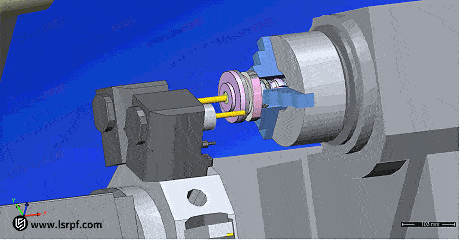
Figure 3: CNC machining process by LS Manufacturing
What Is The Cost Difference Between 3-Axis And 5-Axis Machining?
When designing a CNC machining project, it is important to know the cost variations between 3-axis and 5-axis machining since these affect your equipment investment as well as the total CNC machining expenses. These two technologies have more differences between their prices and their applicable scenarios as well as overall advantages. The following table adequately contrasts their key differences:
| Comparison Dimensions | 3-Axis Machining | 5-Axis Machining |
| Equipment Investment | The purchase cost is relatively low, approximately 150,000 to 500,000 RMB. | Initial investment is higher, typically 800,000 to 2,000,000 RMB. |
| Machining Efficiency | Machining efficiency is good for simple planar or geometric workpieces, but complex workpieces have to be fixed multiple times, which is very time-consuming. | Machining multiple surfaces simultaneously in one fixture significantly improves the machining efficiency by as much as nearly 40% in certain situations. |
| Applications | Applicable to plane milling, roughing and semi-finishing simple contours and workpieces. | Applied to complex curved surfaces (such as impellers and aircraft components), precise molds, and workpieces with high accuracy demands. |
| Cost-Effectiveness in General | Cost per workpiece is improved for simple workpieces. | For complex parts, a small number of setups, labor saving, and reduced cycle times offer greater cost advantages in the long term. |
The key to choosing between 3-axis and 5-axis machining is discovering your own niche:
- Focusing on simple geometry and cost control: If your product has a lot of flat surfaces and low-complexity contours and you are concerned with keeping your initial costs down, 3-axis machining is a practical and economical choice.
- Seeking complexity and overall efficiency: If your workpieces are extremely curved, very precise, or need to be made in high numbers, 5-axis machining, while it takes more to set up in the first place, offers less setup time and more consistency of precision, which ultimately translates to superior unit cost and overall return on investment.
We hope that the above analysis will be helpful to you in making a good choice. If you have any question about which machining process is most cost-effective to employ with your specific workpiece, LS Manufacturing would be happy to provide further analysis.
How To Obtain A Fast And Accurate CNC Machining Quote?
Having proper and accurate information is paramount to obtaining a CNC machining quotation and maintaining overall CNC machining expenses in check. Having a standardized inquiry process not only saves time, but also the quotes are accurate, avoiding unnecessarily incurred expenses in the future. Utilize the following basic steps to obtain an exact quote effectively:
- Provide detailed technical drawings: This is the most crucial. Please supply standard 2D/3D CAD files (e.g., STEP, IGES format) with critical dimensions highlighted, geometric tolerances, and surface finish requirements.
- Material specifications: Specify material type, grade, and blank size requirement. Material specification is a fundamental input influencing CNC machining cost and quotation.
- Specify process and quality requirements: In addition to the details of the drawings, add any special process requirements, end-use applications, and necessary quality inspection levels.
- Check order quantity: Provide the exact production run, which is vital for evaluating tooling, programming, and unit cost allocation.
We simplify and make the quoting process transparent at LS Manufacturing. Just provide the above information, and our skilled team, through our estimating software online, will provide you with a clearly defined, competitive quote without any surprise expenses in the shortest span of time possible, allowing you to plan your project budget appropriately.
Case Study: LS Manufacturing Reduces Costs Of Aerospace Titanium Brackets By 35%
In CNC machining, it is very important to accurately predict the cost per hour of CNC machining and understand the cost benefit of 5-axis compared to 3-axis machining for minimizing project cost. We have recently demonstrated the capability to deliver significant cost savings through process innovation using a real-world case study on an aerospace-grade titanium alloy bracket.
1. Customer Dilemma:
An aerospace supplier was handed a rough deal: the hourly cost of CNC machining for an important titanium alloy bracket remained very high, pushing overall part cost over budget by 30%. The customer got grossly disparate quotations after requesting quotations from multiple suppliers, and it was hard for them to prove their sanity as well as to accurately plan their budget.
2. LS Manufacturing Solution:
Faced with this challenge, the LS Manufacturing engineering group skirted simply adjusting rates and redesigned the process from scratch:
- First, we reassessed the cost-competitiveness of 5-axis machining versus 3-axis machining and creatively introduced a more cost-effective clamping approach, which enabled multi-faceted machining in a single setup and significantly reduced positioning time.
- In addition, we brought in high-performance cutting tooling made especially for titanium alloys and, through the optimization of cutting parameters, greatly enhanced machining efficiency without compromising quality.
- Finally, we were able to cut the machining time per part down from 4.5 hours to 2.8 hours.
3. Results and Value:
Through the overall optimization steps identified above, total CNC machining cost for said titanium alloy bracket was reduced by 35%. Far more importantly, we submitted to the client a complete cost breakdown report, so they could have a clear understanding of every single penny they were spending and setting the stage for long-term collaboration based on trust. Not only did the client escape budget overrun, but they also gained an effective strategic partner.
This case demonstrates how only comparison of hourly rates is not enough to actually maximize cost. Only through process innovation and transparent cost analysis with partners like LS Manufacturing can great cost savings and value creation be achieved.
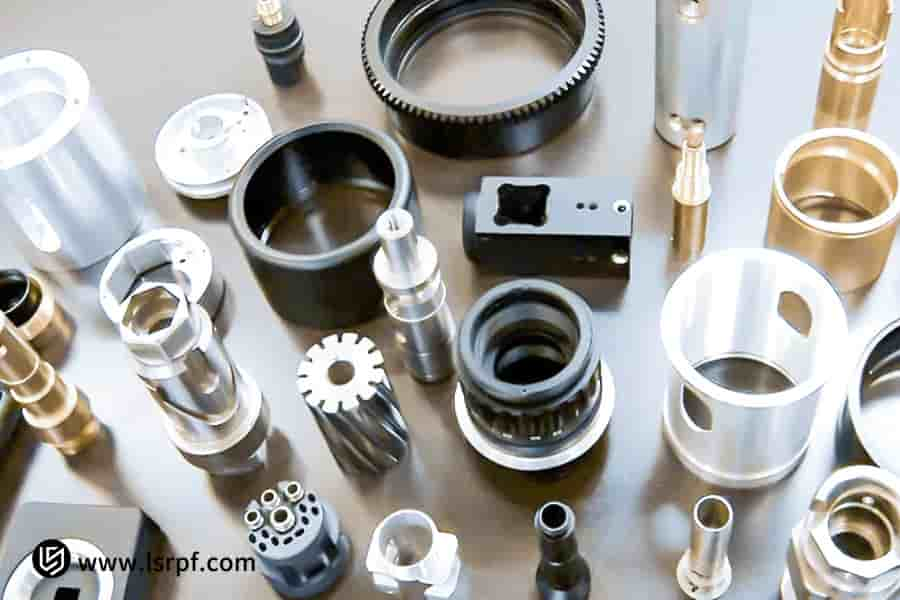
Figure 4: CNC machining parts by LS Manufacturing
Why Can LS Manufacturing Optimize Your CNC Machining Costs?
In the highly competitive manufacturing industry, manufacturers normally have an important question to solve: how to reduce CNC machining cost while maintaining quality? As a precision manufacturing company with over 15 years of experience, LS Manufacturing demonstrates unparalleled value in this aspect by using systematic approaches. Our most significant strengths are largely represented in three areas:
1. Technology and Equipment:
LS Manufacturing employs multi-axis machining centers and high-speed cutting systems whose machining processes possess intelligent matching. This means that in dealing with complex parts, we optimize machining methods to reduce factors that directly impact CNC machining cost, such as machining time and tooling consumption.
2. Professional Team and Process Innovation:
LS Manufacturing's designers are very familiar with material properties as well as cutting practices, enabling them to optimize designs in the first place. By reviewing factors that influence CNC machining cost, such as part configuration and clamping practices, we frequently recommend modifications to reduce machining complexity while still maintaining part performance.
3. Transparent Cost Management:
We don't compete on price alone at LS Manufacturing. We provide customers complete cost breakdown reports that openly present the very actual steps of lowering the cost of CNC machining and allow them to view in full view the value of each penny and build long-term trust.
With the integration of advanced machinery, technical knowledge, and free communication, LS Manufacturing not only successfully controls factors affecting the cost of CNC machining but also offers customers ongoing cost optimization solutions. Let us help you make manufacturing cost a competitive advantage.
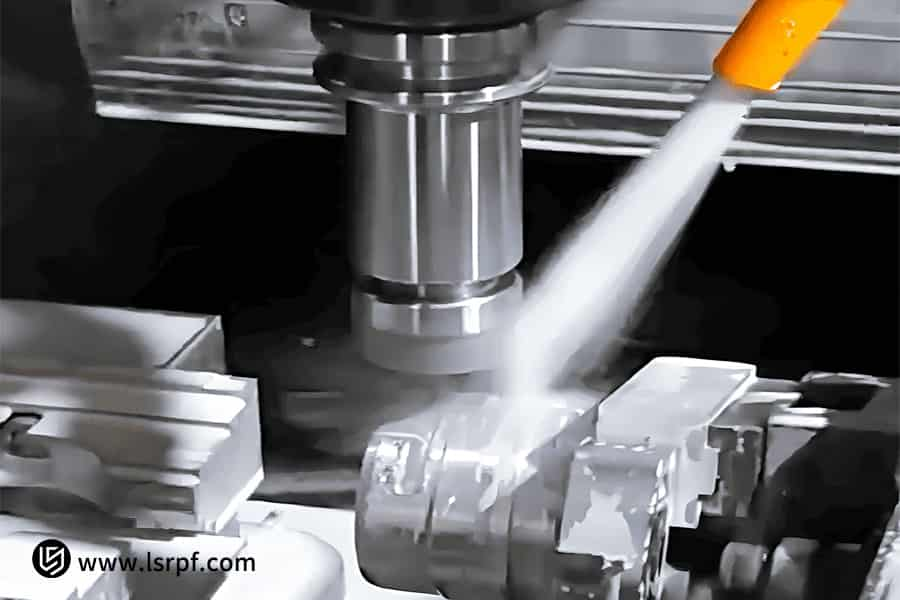
Figure 5: Customized CNC machining technology by LS Manufacturing
What Are The Common Hidden Costs In CNC Machining Costs?
In evaluating CNC machining costs, the majority of businesses will find that the final settlement amount paid is more than what was quoted. This is typically due to non-transparent additional expenses which were not clearly explained. Being aware of these potential cost items will help you to make better decisions while purchasing CNC machining quotes. The following are common hidden costs and their avoidance recommendations:
- Initial setup and programming charges: For low-volume orders, the upfront cost of manual programming and equipment commissioning can be high when distributed across individual parts. Suggestion: When requesting a quote, ask specifically if this is included in the quote.
- Design modification and change fees: If the initial design causes manufacturing problems or drawings need to be revamped halfway through, there will be additional engineering adjustment fees. Suggestion: Providing complete and accurate drawings can effectively avoid these problems.
- Special Tooling and Fixture Fees: Special shapes or materials processing may require special tooling or fixtures, a fee that can easily be overlooked. Suggestion: Expect to inquire if special equipment for processing is required.
- Surface Finishing and Shipping and Packaging Fees: Post-processing operations such as sandblasting and anodizing, in addition to special shipping and packaging requirements, are normal additional charges.
At LS Manufacturing, we practice transparent pricing policies. Our quotes clearly reveal all cost factors so that there will be no surprise fees. When you request us to quote you a CNC machining, you receive an honest and detailed cost estimate so that you can remain within your budget.
How To Reduce CNC Machining Costs Through Supplier Selection?
Effective management of CNC machining costs depends on intelligent supplier selection. Selecting an appropriate partner not only reduces purchase expenses upfront but also creates long-term value through the streamlining of processes and increasing quality consistency. As a trustworthy partner in our business, LS Manufacturing adheres to the practice of evaluating suppliers on the following criteria:
1. Technical Capabilities and Equipment Level:
Investigate whether the supplier has machining strengths that match your product. LS Manufacturing's multi-axis CNC equipment and experienced process personnel can essentially reduce losses in production and cost of time by streamlining machining processes.
2. Cost Transparency and Collaboration Potential:
A quality supplier should provide open-cost analysis and take an active role in early design optimization. From us, you do not only receive an implementer but also a consultant who can help you avoid waste from the design stage and CNC machining cost optimisation.
3. Quality Stability and After-Sales Support:
Consistent quality is the largest cost savings. LS Manufacturing has made a commitment to a system of total quality control to assure part quality, avoiding hidden costs of rework, scrap, and schedule.
Choosing a supplier is a strategic choice. By choosing a supplier like LS Manufacturing with technical expertise, open pricing, and quality commitment, you can convert raw manufacturing cost into repeatable supply chain value, achieving long-term cost management and quality predictability.
What Is The Relationship Between CNC Machining Costs And Part Design?
Within the manufacturing industry, ultimate CNC machining costs and part design are significantly interrelated. Designing with excellence not only meets functional requirements but also significantly reduces costs by optimizing manufacturability. In fact, up to 70% of manufacturing cost is fixed through the design process. The cost-design connection is primarily witnessed in the following areas:
- Simplification of geometry: Removal of unrequired complex surfaces, unnecessary cavities, and minute details can reduce programming and machining time by a tremendous amount, thereby reducing CNC machining costs directly.
- Setting tolerance properly: Highly close tolerances and surface finishes require additional steps and reduced cutting speeds, causing costs to increase exponentially. The application of cost-effective tolerances in non-critical components is necessary to aid in cost optimization.
- Optimization of internal profiles: Internal fillets to be designed with standard tool radii, where practicable, instead of the utilization of non-standard tools can save additional tooling costs and machining time.
- Setup reductions: Simple setups in part design reduce the necessity for adjustments and rotations while manufacturing, thereby improving efficiency and expense.
Integrating manufacturing into the design process is the most effective money control strategy at the beginning. We strongly recommend you consult with your manufacturing partners during the initial stages of the design process.
LS Manufacturing provides professional design consulting and cost optimization services. Our engineers will assist you with assessing the manufacturability of your design and work with you in determining the optimal functionality vs. cost trade-off.
FAQs
1. What is the typical hourly cost range for CNC machining?
Hourly charges for CNC machining typically range between $50 and $200, depending on the machine type (i.e., low-end 3-axis vs. top-end 5-axis equipment), part complexity, material difficulty to machine, and local operating costs. To fit disparate budgets, LS Manufacturing offers affordable, no-haggle pricing so that you're getting the most value for your dollar.
2. How can I reduce the total cost of CNC machining?
Considerable savings are possible by part design optimization (i.e., removal of cumbersome features), selection of best material, and planning batches of production ahead of time. LS Manufacturing has experienced personnel who offer free design consultation to inform you of the savings opportunities at the start while achieving optimal efficiency and cost balance. We employ specialized personnel and experienced technologists.
3. Which is more economical, 3-axis or 5-axis CNC machining?
3-axis machining is appropriate for simple parts and has lower equipment cost. 5-axis technology, by reducing setup time and enabling complex surfaces to be created in a single setup, offers greater overall cost savings when machining complex parts. LS Manufacturing will recommend the most cost-effective option based on your part size and production rate requirements. We will figure out a plan that suits your product best.
4. What information do I need to receive a CNC machining quote?
Send us detailed part drawings (preferably with 2D/3D CAD files), information on the material, the required tolerance, and order quantity. LS Manufacturing's intelligent web-based platform analyzes all of this information instantly to generate an open and accurate quote, reducing your inquiry time and communication costs significantly. If you have any further questions, please do not hesitate to contact our specialists today.
Summary
Through this illustrative guide, we expect that you have gained a usual mastery of the CNC machining cost system—from the universal theory of unit cost, to primary factors of influence such as equipment, materials, and process, to precise calculation methods and optimal methods. LS Manufacturing would like to help clients achieve enormous cost savings and quality guarantee through its technological expertise and open service.
If you're getting a CNC machining service, don't hesitate to contact our seasoned professionals. Simply provide us with your blueprints or specs and we'll give you a clear, detailed quote and professional process recommendations. Contact LS Manufacturing and visit our site or call our customer support hotline to become LS Manufacturing's preferred production partner, collaborating with us in developing high-quality, cost-efficient solutions.
📞Tel: +86 185 6675 9667
📧Email: info@longshengmfg.com
🌐Website:https://lsrpf.com/
Disclaimer
The contents of this page are for informational purposes only. LS Manufacturing services There are no representations or warranties, express or implied, as to the accuracy, completeness or validity of the information. It should not be inferred that a third-party supplier or manufacturer will provide performance parameters, geometric tolerances, specific design characteristics, material quality and type or workmanship through the LS Manufacturing network. It's the buyer's responsibility. Require parts quotation Identify specific requirements for these sections.Please contact us for more information.
LS Manufacturing Team
LS Manufacturing is an industry-leading company. Focus on custom manufacturing solutions. We have over 20 years of experience with over 5,000 customers, and we focus on high precision CNC machining, Sheet metal manufacturing, 3D printing, Injection molding. Metal stamping,and other one-stop manufacturing services.
Our factory is equipped with over 100 state-of-the-art 5-axis machining centers, ISO 9001:2015 certified. We provide fast, efficient and high-quality manufacturing solutions to customers in more than 150 countries around the world. Whether it is small volume production or large-scale customization, we can meet your needs with the fastest delivery within 24 hours. choose LS Manufacturing. This means selection efficiency, quality and professionalism.
To learn more, visit our website:www.lsrpf.com.


